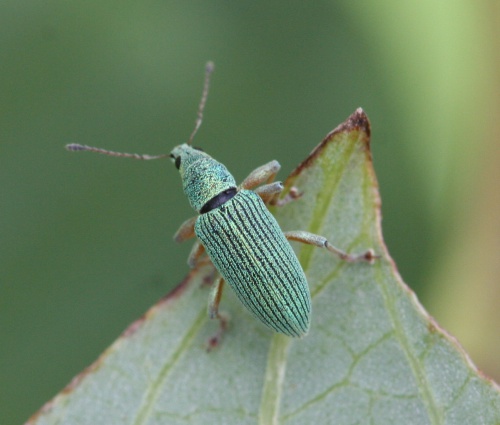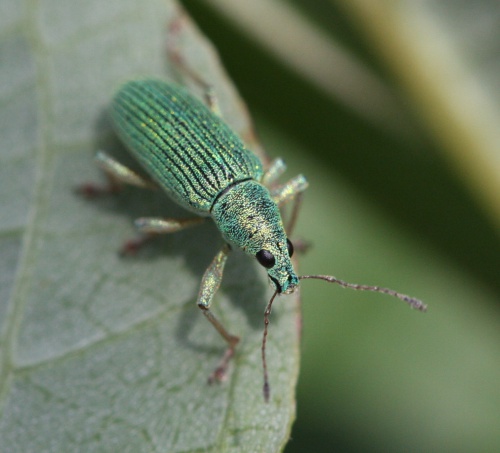Polydrusus formosus
Length 5 to 6 mm. A bright metallic green weevil with round scales, a dark club to the pale antennae and a short groove between the eyes. It does not have any setae (bristles). It has conspicuous striae on the elytra. The scales can wear off to reveal the dark body beneath.
Unless identified by a recognised expert, photographic evidence is required and the specimen should be examined with a microscope. In the comments box, state the key or ID method used. Note the beetle's size and describe the identifying characters. It is advisable to retain the specimen in case further checks are needed.
Found on various broadleaved trees and bushes.
April to August.
Adults of this beetle lay their eggs in the bark or leaves of the host-plants. The soil inhabiting larvae grow up to 7 millimetres long feeding on juicy plant roots. In Autumn their development is complete. They overwinter and pupate in Spring.
Widespread in England but previously very scarce, it is now undergoing an increase in numbers.
Uncommon or under recorded in Leicestershire and Rutland.
Leicestershire & Rutland Map
Enter a town or village to see local records
MAP KEY:
Yellow squares = NBN records (all known data)
Coloured circles = NatureSpot records: 2020+ | 2015-2019 | pre-2015
UK Map
Species profile
- Species group:
- Beetles
- Kingdom:
- Animalia
- Order:
- Coleoptera
- Family:
- Curculionidae
- Records on NatureSpot:
- 11
- First record:
- 05/06/2014 (Nicholls, David)
- Last record:
- 23/06/2023 (Nicholls, David)
Total records by month
% of records within its species group
10km squares with records
The latest images and records displayed below include those awaiting verification checks so we cannot guarantee that every identification is correct. Once accepted, the record displays a green tick.
In the Latest Records section, click on the header to sort A-Z, and again to sort Z-A. Use the header boxes to filter the list.








